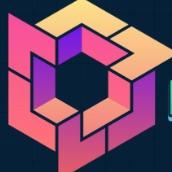Reflectra.Ai
Revolutionizing AI Innovation
The problem Reflectra.Ai solves
The problem of augmenting user-provided open-source Language Learning Models (LLMs) with Chain of Thought reasoning addresses several key challenges in the current AI and NLP landscape:
- Enhanced Reasoning Capabilities:
Problem: Standard LLMs often provide answers directly without explaining the reasoning process. This can lead to incorrect or unconvincing responses, especially for complex problems that require multi-step logic or contextual understanding.
Solution: By integrating Chain of Thought reasoning, the framework allows LLMs to break down complex queries into intermediate steps, offering more structured, transparent, and logically coherent responses. - Improved Accuracy and Reliability:
Problem: LLMs may sometimes produce responses that sound plausible but are factually incorrect or lack logical consistency.
Solution: Step-by-step reasoning enables the model to verify each part of its response, reducing errors and increasing the overall reliability and trustworthiness of the output. - Human-like Reasoning and Reflection:
Problem: Users often find it difficult to understand or trust AI outputs when they cannot see the rationale behind them. LLMs typically don’t reflect on their responses or adapt based on previous reasoning.
Solution: The framework introduces reflective reasoning, allowing models to revisit and revise their answers. This emulates a human-like thought process where the model can assess and correct its own reasoning, leading to better user trust and satisfaction. - Handling Complex, Multistep Queries:
Problem: Traditional LLMs struggle with tasks that involve multiple steps or dependencies, such as mathematical problem-solving, logical puzzles, or procedural instructions.
Solution: With Chain of Thought reasoning, the model can break down these tasks into manageable sub-tasks, improving its ability to handle complex queries that require sequential reasoning. - Customization and Flexibility with Open-Source Models:
Problem: Closed-source
Challenges we ran into
Building a framework that integrates Chain of Thought (CoT) reasoning with open-source LLMs involves several challenges. Here are the key challenges and their potential impact on the development process:
- Model Adaptation and Training:
Challenge: Open-source LLMs are typically not fine-tuned to perform CoT reasoning. Adapting these models to effectively generate step-by-step explanations or reflections can be difficult.
Impact: Training these models for CoT tasks may require substantial data and computational resources. Additionally, tuning parameters to ensure coherent intermediate steps without losing context or introducing hallucinations can be challenging. - Data Requirements:
Challenge: High-quality, annotated data for training models to perform CoT reasoning is scarce. Constructing or sourcing datasets that teach the model how to reason through problems step-by-step is non-trivial.
Impact: Without sufficient or appropriate data, the model might struggle to generate meaningful intermediate steps, leading to poor reasoning quality. - Handling Ambiguity in Reasoning:
Challenge: CoT reasoning requires handling ambiguity and uncertainty, especially for complex problems where multiple solutions or interpretations exist.
Impact: Models may produce incomplete, incorrect, or ambiguous intermediate steps, which could confuse users or reduce trust in the system. - Maintaining Context and Coherence:
Challenge: As the model generates step-by-step outputs, maintaining the context of the initial query and ensuring coherence throughout the reasoning process is difficult.
Impact: Loss of context can lead to responses that diverge from the initial question, making the reasoning appear disjointed or irrelevant. - Computational Constraints:
Challenge: CoT reasoning often requires running multiple forward passes through the model to generate each intermediate step. This increases computational overhead.
Impact: High latency and resource consumption can make real-time applic
Discussion
Builders also viewed
See more projects on Devfolio
